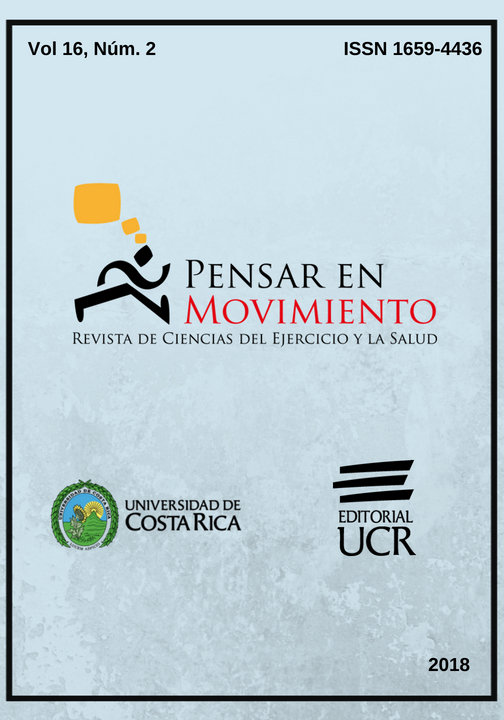Abstract
This experimental study was designed to evaluate if the subjective perceptions of thirst and heat, as well as the voluntary water intake, are different in two different environmental conditions which are equivalent in terms of thermal stress index, during exercise and ad libitum rehydration post-exercise. Methods: 14 participants exercised twice in a controlled climate room (WBGT≈28.5 ° C): once for dry heat (DRY, DBT = 33.8 ° C, RH = 53%) and once for humid heat (HUM, DBT = 32.1 ° C and RH = 67%) without fluid intake, until reaching a dehydration equivalent to 4% MC. Perceptions of thirst, heat, fullness and side stitch were measured every 30 min during exercise. Subsequently, they ingested water ad libitum for 90 minutes. The voluntary intake of water was also measured. Results: During exercise, thirst perception was the same for both conditions (DRY 64.44±23.38, HUM 67.32±20.41mm, p = 0.409), but increased over time (p = 0.0001). The same happened with heat perception: there was no difference between conditions (DRY 6.34±0.50, HUM 6.40±0.37ua, p = 0.423), but it increased over time (p = 0.001). At the end of rehydration, heat perception was greater for dry heat (5.3 ± 0.2ua) than for moist heat (4.7 ± 0.2ua, p = 0.006). At the end of the exercise, thirst (85.8 ± 19.4mm) showed no significant correlation with actual dehydration (3.82 ± 0.18% MC, r = -0.14, p = 0.48) or with voluntary water intake (1843 ± 587 mL, r = -0.04, p = 0.85). There was no correlation between the actual sweat loss (2766 ± 700 ml) and the voluntary water intake (r = 0.16, p = 0.42). The association between net fluid balance and thirst perception was R2a = 0.70 (p = 0.001) Conclusions: thirst and heat perception were the same when exercise was performed in two different environmental conditions with the same level of thermal stress. The scale of perception of thirst was able to detect progressive dehydration consistently: the greater the dehydration over time, the greater the thirst. However, the results of this study do not support the theory that voluntary water intake is adequate to replenish sweat losses after exercise.






